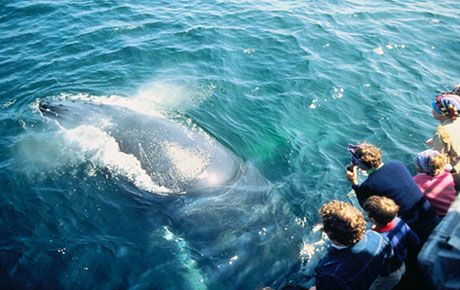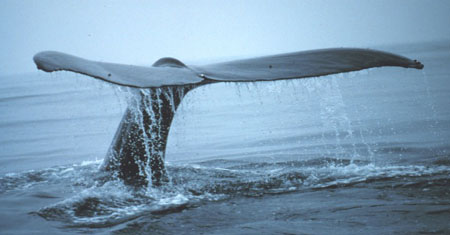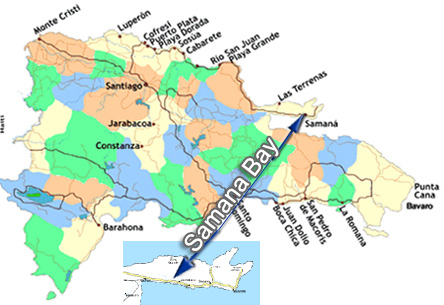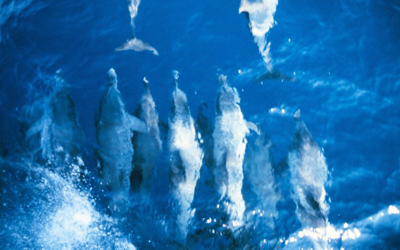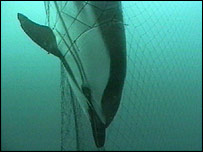|
Watch Whales and Picture Dolphins
|
It is unpleasant to picture dolphins ensnared in the long nets laid by tuna fishermen, and others. Dolphins also breathe through 'blow holes' in the top of their heads, so if they are trapped underwater in fishing nets they soon drown!(So always check the labels on the cans of tuna YOU buy to ensure they are 'dolphin friendly' brands.)
Anyone who remembers 'Flipper' will know what sounds a dolphin makes. By emitting a rattle of varying, shrill clicks the dolphin can sense the proximity of friend, foe and food as the 'echoes' of these sounds come back to them, similar to a submarine's sonar system!
'Slender-beaked Dolphins' (as Spotters are also called) are very effective hunters and generally catch fish near the seas surface. They will also eat shrimp, crabs and other crustaceans and squid.
So, when is the best time to get the best dolphin pictures, and photograph whales at play ?
You should take a note that you can only expect to be watching whales during their seasonal winter visit to the warm waters of the Dominican Republic from mid-January to mid-March.
Watching dolphins and whales is an unforgettable experience. Just one of numerous ecotourism opportunities you will discover whilst visiting the Dominican Republic. Check back here from time to time as we add more information about ecotourism and activities to make your vacation to the Dominican Republic extra special.
In pictures of dolphins you will see that they too have a fluke, or tail fin, which they move up and down to propel themselves through the water. This is a key difference between these 'cetaceans' (as dolphins/whales are called) and fish, which swim by moving their tails from side to side.
These powerful tail movements can enable dolphins almost to seem to 'walk' on the surface of the sea – see the wonderful picture of a dolphin doing just this (below):
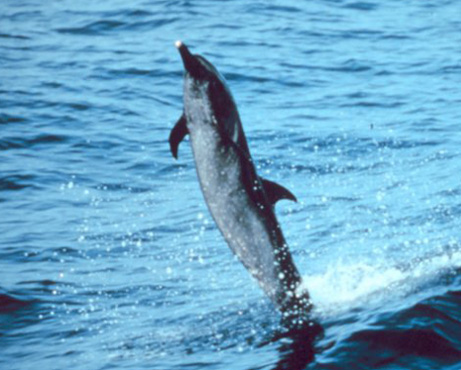
And how can you arrange an opportunity to be watching whales and perhaps to picture dolphins too, whilst on your vacation in the Dominican Republic?
Drop us a line for advice about watching dolphins and whales and we'll be happy to try and help by putting you in touch with reputable and safe operators that respect both their customers and care about these magnificent marine animals.
You might like to take a closer look at these wonderful dolphin pictures, too:
| ||||||||||||||||||||||||||||||||||||||||||||||||||||||||||||||||||||||||||||||||
| ||||||||||||||||||||||||||||||||||||||||||||||||||||||||||||||||||||||||||||||||
Ruth & Esther
(We gratefully acknowledge that wonderful source of marine photography, published by the US National Oceanic and Atmospheric Administration (NOAA), which provided the photographs on this page - NOAA. We also acknowledge Art.com through whose affiliate program we are able to offer the very high quality prints and pictures of dolphins you see above.)
Return to the top of the Watch Whales and Picture Dolphins page






